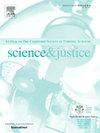Bridging research and practice: A critical review of biological profile estimation methods applied to the Mexican population
IF 1.9
4区 医学
Q2 MEDICINE, LEGAL
引用次数: 0
Abstract
Mexico faces an unprecedented humanitarian crisis of human identification that demands comprehensive efforts to increase the number of identified individuals. Reliable and accurate biological profile estimations are crucial in this process. This study presents a literature review of methods for estimating age, sex, and stature in the Mexican population, assessing their validity and suitability for specific contexts. Specifically, we extracted and critically analyzed information on sample characteristics, methodological details, reliability and accuracy metrics, and operational aspects. Out of 125 screened articles, 28 met the eligibility criteria: 12 focused on age, 12 on sex, 3 on stature estimation, and 1 on sex and age. General methods such as Demirjian’s, Íşcan’s, and Cameriere’s have proven effective for age estimation across various Mexican populations, while discriminant function analysis has been successful in estimating sex using different anatomical elements, and regression analysis of long bones in estimating height. These findings highlight the variety of methods available for reliable biological profile estimation in Mexico. Based on these results, we offer recommendations for both academic research and forensic practice, aiming to guide forensic practitioners in selecting suitable methods and to stimulate discussions on establishing minimum acceptable methodological practices in the field.
桥接研究和实践:应用于墨西哥人口的生物剖面估计方法的关键审查
墨西哥面临着前所未有的人类身份识别人道主义危机,需要作出全面努力,增加身份识别个人的数量。在这个过程中,可靠和准确的生物剖面估计是至关重要的。本研究提出了估计墨西哥人口的年龄、性别和身材的方法的文献综述,评估其有效性和适合于具体情况。具体来说,我们提取并批判性地分析了样本特征、方法细节、可靠性和准确性指标以及操作方面的信息。在125篇筛选的文章中,28篇符合资格标准:12篇关注年龄,12篇关注性别,3篇关注身高估计,1篇关注性别和年龄。一般的方法,如Demirjian, Íşcan和Cameriere的方法已被证明对各种墨西哥人群的年龄估计是有效的,而判别函数分析已成功地利用不同的解剖元素估计性别,并对长骨进行回归分析以估计身高。这些发现突出了墨西哥可靠的生物剖面估计方法的多样性。基于这些结果,我们为学术研究和法医实践提供了建议,旨在指导法医从业者选择合适的方法,并激发在该领域建立最低限度可接受的方法实践的讨论。
本文章由计算机程序翻译,如有差异,请以英文原文为准。
求助全文
约1分钟内获得全文
求助全文
来源期刊

Science & Justice
医学-病理学
CiteScore
4.20
自引率
15.80%
发文量
98
审稿时长
81 days
期刊介绍:
Science & Justice provides a forum to promote communication and publication of original articles, reviews and correspondence on subjects that spark debates within the Forensic Science Community and the criminal justice sector. The journal provides a medium whereby all aspects of applying science to legal proceedings can be debated and progressed. Science & Justice is published six times a year, and will be of interest primarily to practising forensic scientists and their colleagues in related fields. It is chiefly concerned with the publication of formal scientific papers, in keeping with its international learned status, but will not accept any article describing experimentation on animals which does not meet strict ethical standards.
Promote communication and informed debate within the Forensic Science Community and the criminal justice sector.
To promote the publication of learned and original research findings from all areas of the forensic sciences and by so doing to advance the profession.
To promote the publication of case based material by way of case reviews.
To promote the publication of conference proceedings which are of interest to the forensic science community.
To provide a medium whereby all aspects of applying science to legal proceedings can be debated and progressed.
To appeal to all those with an interest in the forensic sciences.
 求助内容:
求助内容: 应助结果提醒方式:
应助结果提醒方式:


